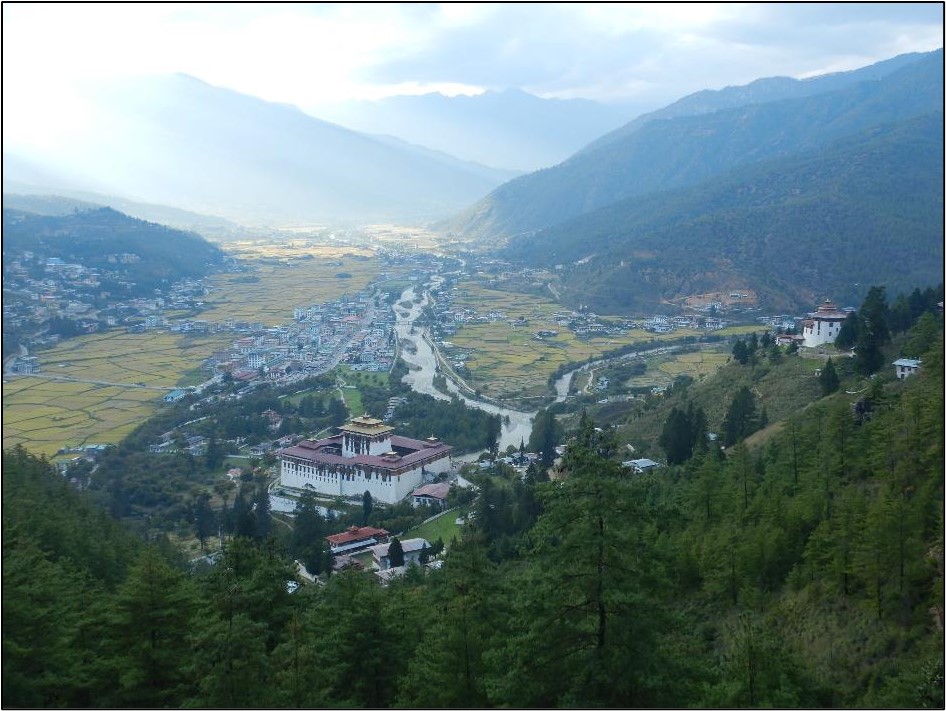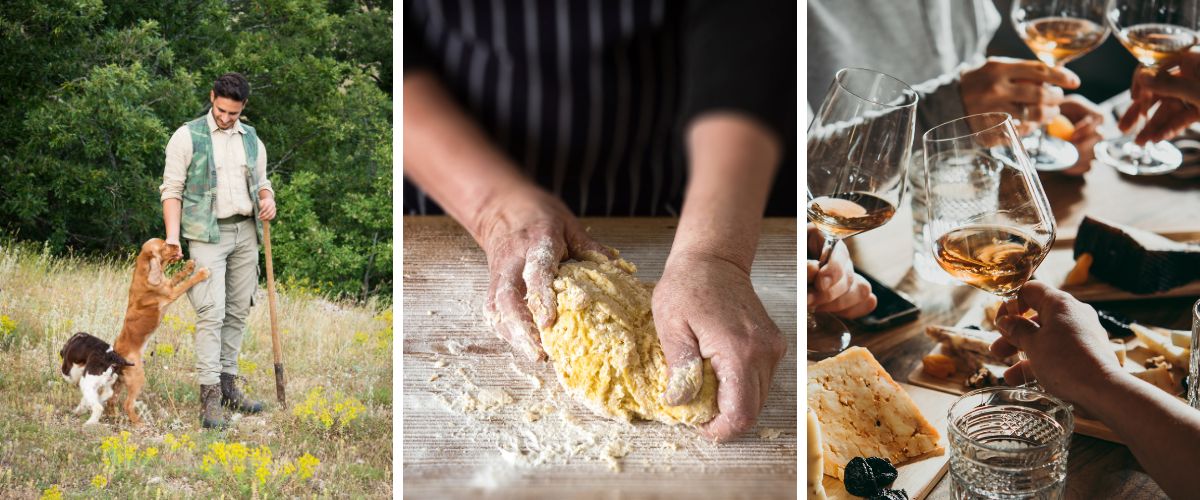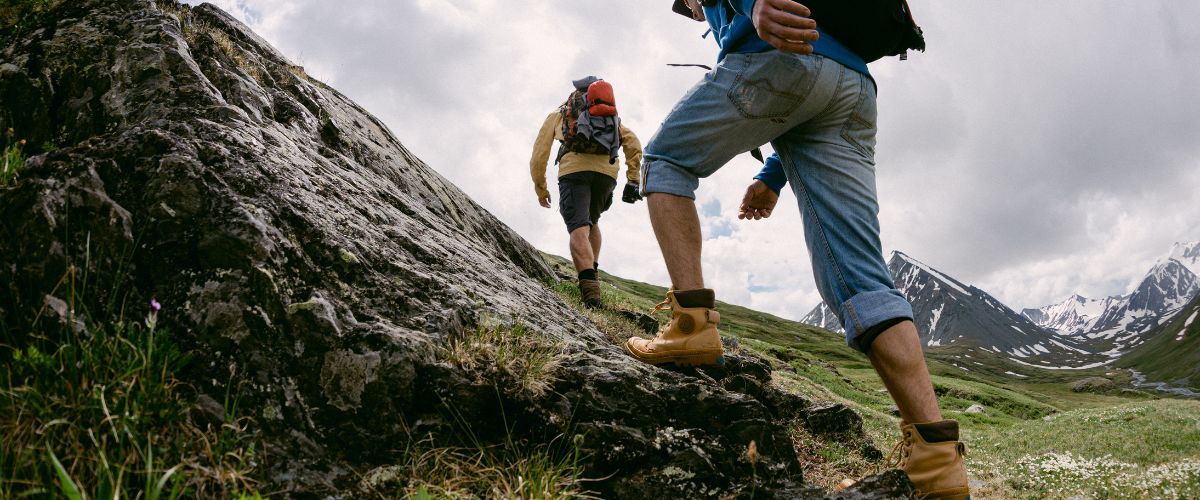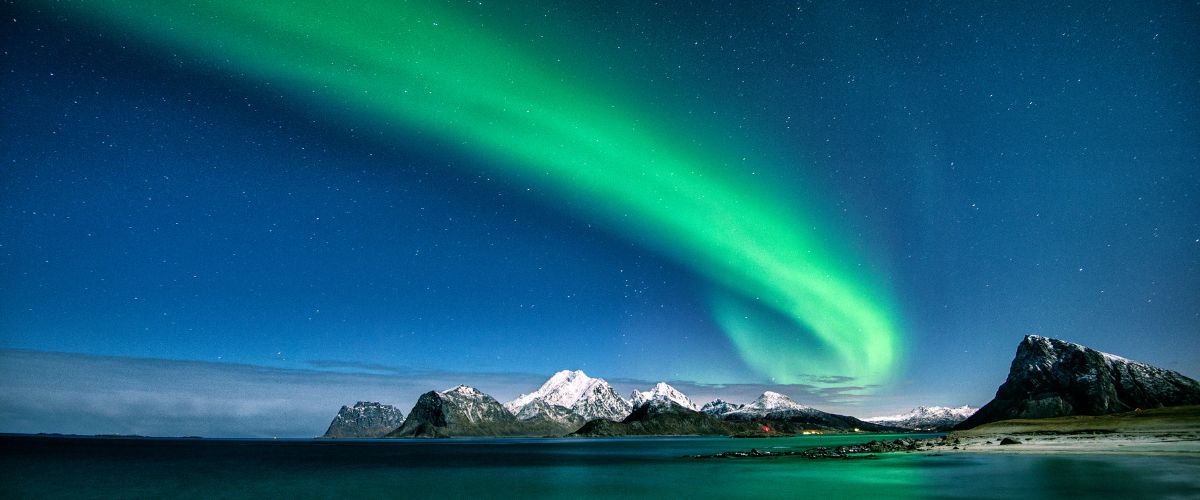A couple of our travellers have recently returned from a long-awaited trip to Bhutan.
In light of our upcoming Ruby anniversary trip to Bhutan in 2024, we are sharing (with permission) their feedback and pictures to whet your appetite for this fascinating destination.
Bootleg Bhutan 2023
My partner and I recently returned from a trip to Bhutan organised through Backtrack Adventures and local Bhutanese company Blue Poppy. We had been thinking about traveling to Bhutan for some time and then the world shut down, so everything was put on hold. When Bhutan re-opened, we thought it was now or never, so I re-read my out-of-date travel guide and we identified where we would like to go and the core things we would like to see/do. No trekking was to be had on this trip.
Magical Bhutan, a place of snow-capped mountains, deep valleys with rushing rivers, temples, monasteries, prayer flags, yaks and, if you’re lucky, Yeti-Migoi (Bhutan has a wildlife sanctuary that has been set aside to protect the habitat of the yeti)! As I think back on my recent visit to Bhutan, my memory starts to wonder if I had found Shangri-La, the mythical Himalayan utopia – an enduringly happy land, isolated from the world. The simple answer is yes, I had! While the environment and the traditional clothes, buildings and the dzongs (fortified monasteries) provide the colour palette, the core fabric of Bhutan is Buddhism, introduced by Guru Rinpoche. Therefore, to fully experience Bhutan it is critical to embrace and, importantly, respect Buddhist traditions.

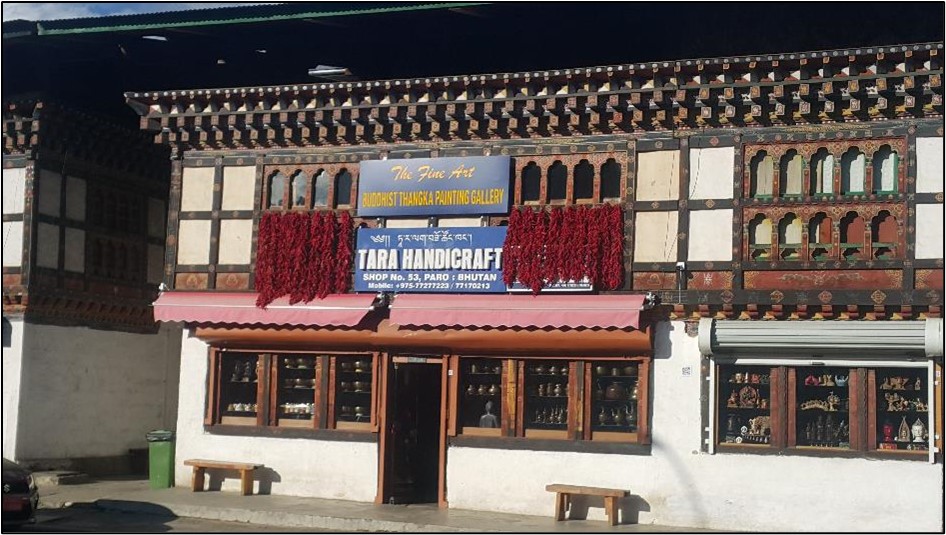

Most people enter Bhutan via Paro international airport, one of the most “interesting” landings you are likely to experience. When my partner and I landed at Paro, an old practice I had picked up in the Middle East came back to me – applauding the pilot on landing! Our impromptu claps were quickly echoed throughout the plane. As you enter the luggage collection area of the airport, the specialness of Bhutan is evident in the large model of a dzong (fortress-monastery) within the baggage return conveyer belt! You are now at 2280m above sea level and you will go even higher. Some people will want to rush out and go and see Tiger’s Nest (Taktshang Goemba), the famous monastery clinging to the side of a mountain just outside of Paro. HOWEVER, unless you live at altitude, you need to acclimatise first.
One of the important decisions you have to make is where in Bhutan to visit. Most people visit western Bhutan – Paro, Tiger’s Nest, Thimphu and Punakha. This is understandable because Tiger’s Nest and Punakha Dzong are highlights of any trip to Bhutan (and the distances are shorter, and the roads are better). However, I would recommend that people also include central and eastern Bhutan, as these are the less visited areas of the country.
I followed my own advice and built a program around eastern and central Bhutan – 5 nights in eastern, 4 nights in central and 5 nights in western Bhutan.
After one night in Paro following our 5.00am flight from Bangkok (!), we set off with our very knowledgeable local guide Pema for the eastern parts of the country. The short flight from Paro to Yonphula had spectacular views of forested mountains with snow-covered peaks. However, the exhilarating highlight was the short ridge-top landing strip with the earth mound at the end to stop any runaway planes! The Beatles’ song “The Long and Winding Road” could have been written about the roads in eastern Bhutan. They are often single-lane dirt roads cut into the sides of mountains, and so passing oncoming traffic, especially trucks, can be interesting – I always gave my partner the seat nearest the edge! These roads also provide effective whole-body massages. Thankfully, we had an excellent, very safe driver on these difficult roads.

It takes a long time to go relatively short distances. In many respects this is good, because it allows you to fully appreciate the landscape, which changes dramatically with altitude. You stop at or you pass prayer flags, waterfalls, more prayer flags, Buddhist shrines, water-driven prayer wheels and even more prayer flags. To be honest the ever-present prayer flags flapping in the breeze are one of my most vivid memories of Bhutan.

Some of the most poignant items you will see are the small, hand-made clay stupas containing the ash of a dead relative and/or prayer scrolls that are placed in protected crevices/overhangs along the sides of the roads, often in large numbers.
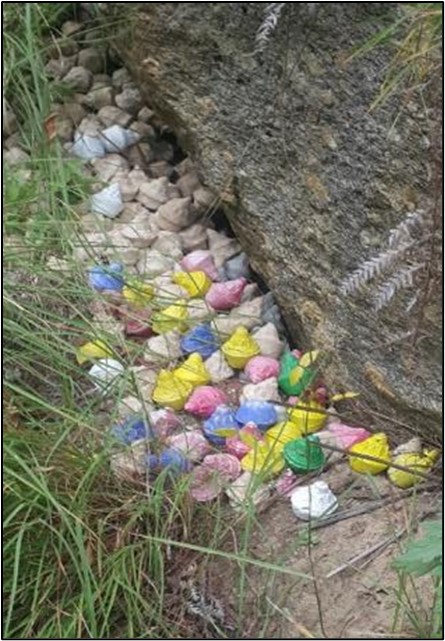

As you may know, you move in a clockwise direction in Buddhist temples. You also circumambulate shrines in a clockwise direction. Where a chorten/stupa has been erected next to a road, a track is usually established so that cars can travel around it in a clockwise direction. As I observed earlier, Buddhist beliefs and traditions are everywhere.

One of the special aspects of visiting eastern (especially) and central Bhutan is that you are often the only tourist at temples or in villages, which allows you to absorb the spirituality of places and experience everyday life. We loved being the only people at some of the older temples such as Gom Kora, Jampey Lhakhang and Membartsho (the Burning Lake), where you are enveloped by the mysticism.
We both developed biceps in our right arms from spinning the prayer wheels as we circumambulated the many shrines.
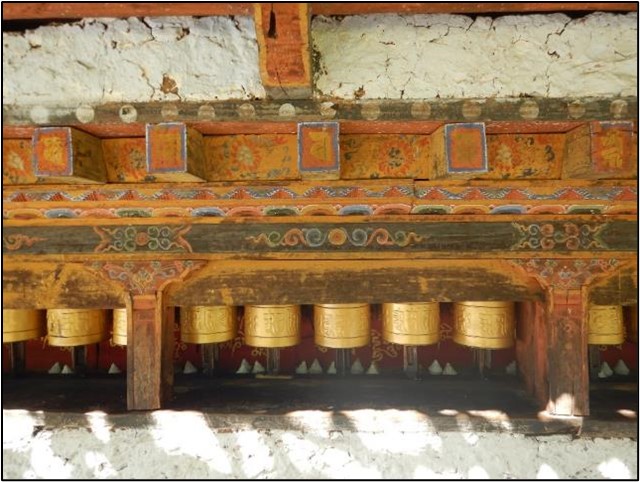
The small towns and villages throughout Bhutan are beautiful and atmospheric, where the vibrantly painted traditional buildings – even new concrete buildings – have to follow the traditional pattern (something Australian governments/councils should consider).

Picking highlights from such a special trip is hard, but following serious meditation the following came to me:-
The unexpected experiences that we stumbled across, or which found us on our spiritual pilgrimage, were very special and illustrated the importance of a flexible tour program. On a number of occasions, we were able to sit and experience monks in prayer and playing the Dung-Chen (long trumpet), Dungkar (conch shell trumpet), Nag (upright drum played with a curved stick) and the kangling (a trumpet made from a thigh bone). One example included watching young trainee monks reciting prayers, playing instruments and then placing the loose-leaf prayer sheets between the wooden backing boards and then meticulously wrapping silk material around it. One day while visiting the Bomdeling Wildlife Sanctuary, we followed the sound of music to a small monastery where the monks had recently arrived from their summer monastery higher up the valley. The Abbot showed us the prayer hall and its important relics, gave us butter tea and arranged for two boys to play Kanlings, small copper trumpets, for us.
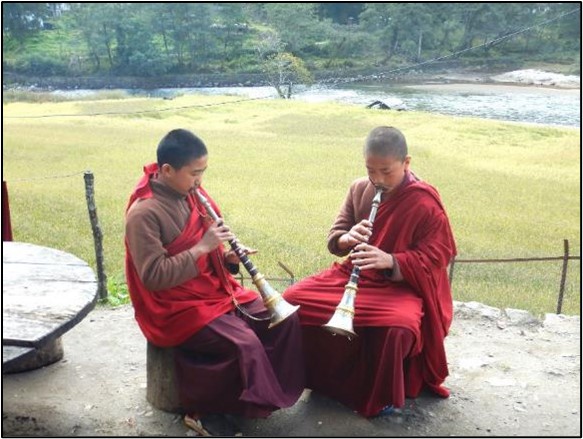
In Trashigang Dzong we also watched monks practicing the dances for an upcoming Tsechu festival. This was good preparation for the Jakar Tsechu, one of the must-see things on our wish-list for Bhutan. What an amazing experience to ascend the steep stairs to the Jakar Dzong with all the local people in their best, brightly coloured traditional clothes – kiras for women and ghos for men. We were wearing our best drab traveling cloths! After moving into the main courtyard (dochey) we settled down amongst excited families with their picnics and watched various traditional masked dances. The athletic dancers perform wearing various hand-carved and painted masks depending on the actual dance and brightly coloured clothes. Proceedings are “managed” by the clowns (Atsara), who wear large red masks with a giant phallus hanging from their foreheads representing power and fertility.
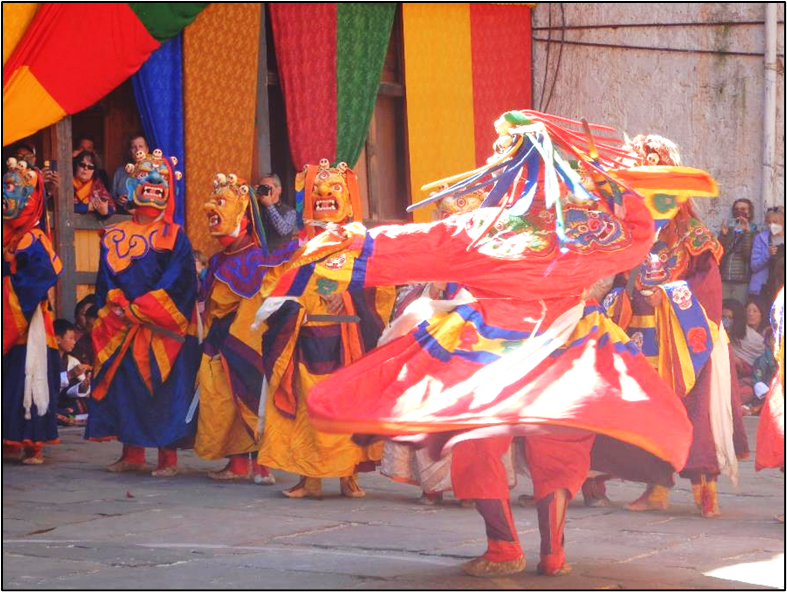
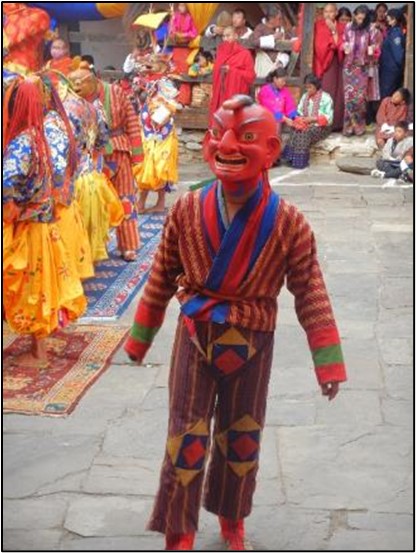

We stayed for a full day at the Tsechu and loved it so much we returned for the final morning of it when the Thongdrel, a large appliqué thangka, is unfurled in the courtyard and the people file past obtaining blessings. We joined the procession in the hope of being cleansed of negative karma. A Tsechu is a must see/experience, so plan your trip so you get to one of them.
One of our fun adventures on the trip was finding the Dorji Drolo rock painting. I had seen in an old travel guide that just outside Jakar you could walk to some rock paintings which we decided would be a nice activity. Our guide Pema, who said he had been to the paintings once, 10 years prior, described it as representing one of the eight manifestations of Guru Rinpoche, the terrifying wrathful Dorje Drolö riding upon a tigress to subdue demons. So, after visiting the last morning of the Tsechu, we headed off for a nice easy walk to the painting with Pema and our driver Sanjeev in their best ghos. When we arrived at the broad location to start the walk there was no obvious track, just a scrubby hillside! So, we had to scramble through the scrub and climb over/under fences, but to no avail. Eventually, Pema went off and located an old lady at a nearby house who showed us where it was – apparently no one goes there nowadays. The painting was amazing and Pema’s and Sanjeev’s ghos escaped unscathed!
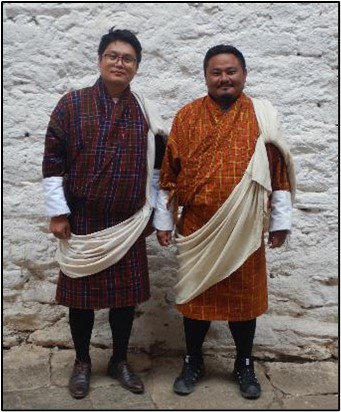
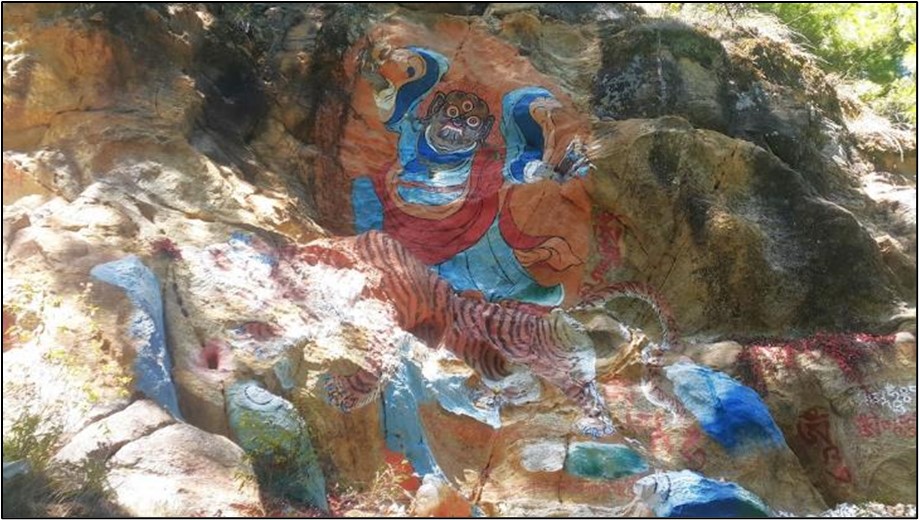
The Ogyen Choling Palace and museum in the Tang valley, near Jakar, is an interesting excursion and has a nice lunch. The heirs of Ogyen Choling decided to convert parts of their ancestral home to a museum with the aim to preserve and maintain Ogyen Choling as a religious and cultural centre. Kunzang Choden is the 20th generation of the family at Ogyen Choling and is an author – she was the first Bhutanese woman to write a novel in English. We had the pleasure of chatting with “Aunty” Kunzang and got two of her books autographed – “Bhutanese Tales of the Yeti” and “Monk Chasing Monkey”. Fortuitously, our visit coincided with the last day of the Kangso ritual, a local festival at the Ogyen Choling temple, where there is a re-enactment of a procession of warriors seeking the support of Gonpo Maning, a protector deity, to vanquish their enemies.
In the courtyard in front of the temple two horses are prepared with their best saddles and ornaments, a calf with a colourful blanket and a dog with a red ribbon collar, along with flag bearers and warriors. The culmination is a procession around the temple three times by all those involved, including the animals and the local villagers. Each time the horses and warriors reached the front of the temple, everybody shouted. We were lucky to be invited to join the procession and probably gave the loudest shouts. Following the procession, the ladies from the village performed folk dances and welcomed my partner, who performed very well.
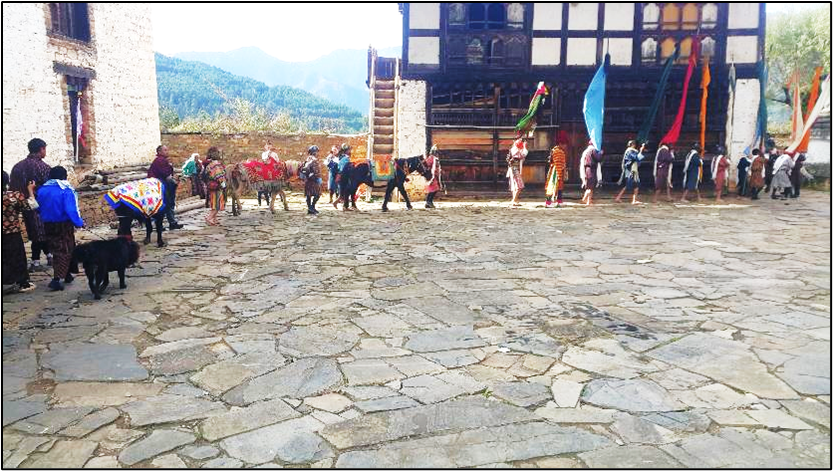
Another traditional activity we had hoped to see was archery (datse), Bhutan’s national sport. The 140m-long field is placed wherever there is enough flat space – in Lhuntshe, it was on the side of a valley above a river. Luckily my partner and I were able to view two archery competitions where the men wore ghos and used traditional wooden bows ad arrows. As appreciative spectators, although we couldn’t see the arrows traveling through the air at high speed, we mirrored the slow celebratory dance when the target hit, but refrained from the good-hearted mocking for a miss. One unexpected sporting pleasure was witnessing a traditional darts (khuru) tournament in Rangjung village, Trashigang. Now this is no “pub” darts game where you have a beer in one hand and can almost touch the darts board with the other. It is played on a 20m long field with a small target positioned on the ground. The game was very animated, with opposition players standing around the target waving their arms to distract the dart thrower. As with archery, it amazes me that the men standing around the targets were observant enough not to get hit!
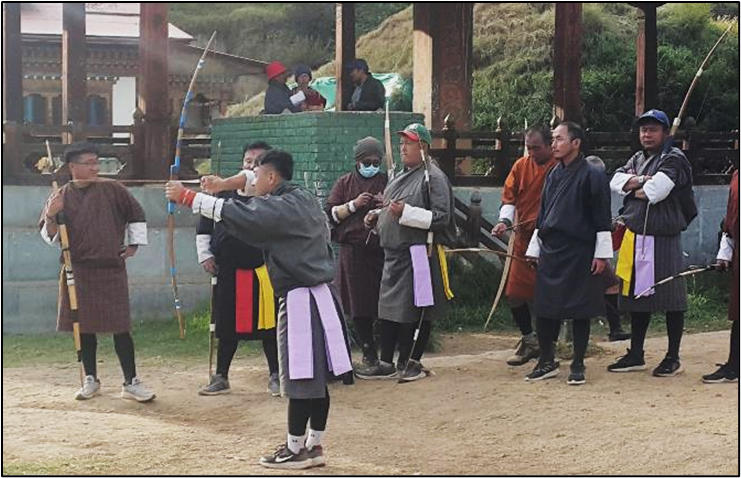
An extension of the darts story happened in the small village of Autsho in Lhuntshe, with its slab buildings. One evening we heard singing so went into a small general shop and restaurant where a celebration was well underway. We learnt that the local women’s khuru team had won that day, and they were celebrating. My partner was coaxed into dancing with the ladies, while I imbibed way too much of the locally made arra, a very strong corn spirit!
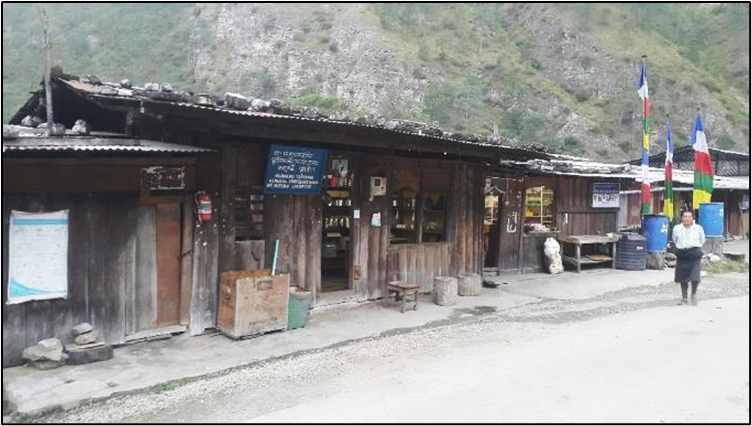
The highlight for many visitors to Bhutan is the hike to Tiger’s Nest – Taktshang Goemba. The legend is that Guru Rinpoche flew to the site on the back of a tigress to subdue a local demon. Following Guru Rinpoche’s lead, we travelled to Tiger’s Nest, but on the back of horses. Whilst we did this through physical necessity (we didn’t have the 2 days’ spare time that it would have taken us to climb up!), it proved to be a really good decision. The horses were fun and unlike most of those struggling up the track, we enjoyed the ascent. We didn’t go all the way to the actual temple (the last section is quite hard), but we went to a view point a little past the cafeteria. The cafeteria has excellent views towards the temple, so reaching it should be your first priority, and then after tea/coffee you can decide if you want to venture further. Remember that you also have to descend again. We really enjoyed the walk back down through the forests with views back towards Tiger’s Nest. Next time I will train harder beforehand and give the final ascent by foot a go.
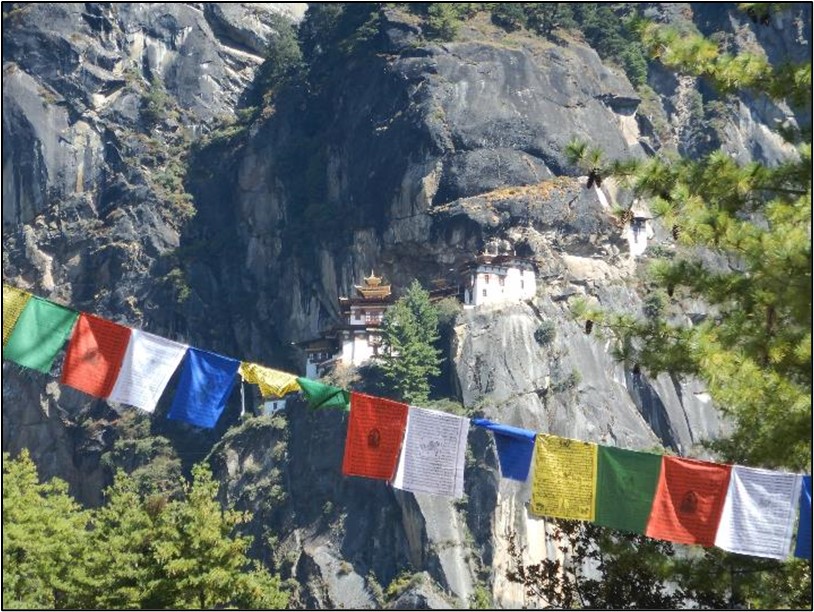
Purchasing products from the local crafts people was also an important part of the trip for us. So, for example, we went to see the weavers at Khoma village where we bought some scarves, saw the wood-turners at Tashi Yangtse and collected wooden bowls, and in Bumthang we purchased a woollen carpet from the lady who hand dyed the wool and wove the carpet (my feet will miraculously take me back to Bhutan every time I walk on the carpet).
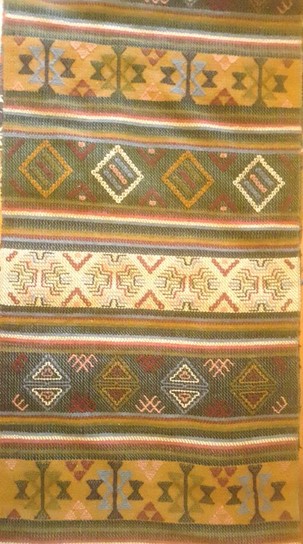
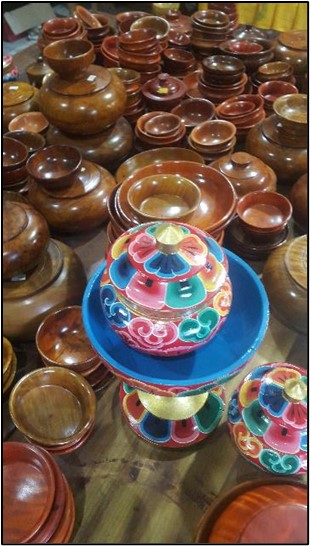
Now to some important logistical matters.
A thing to remember is that due to the altitude the sun is really really strong in Bhutan, so bring a hat, good sunglasses and use sun screen! Getting badly burnt on your first day will ruin your trip.
Bhutanese food is very nice and generally not as hot as you may assume. Your tour will include all meals, and these will generally be in your hotel or at a tourist restaurant. At most of these you will get western style and/or Indian dishes. My partner and I wanted to try the local food and experience local colour, so we asked that our lunches be at local restaurants where locals eat. We had some great local meals in characterful places. The dried beef dishes are excellent, momos are the best especially when you are shown how to make them, and the potatoes with cheese and chill is really nice although a little spicy. Unless you love chilli, don’t eat the chilli salad! You can get good coffee in Paro and Thimphu and tea everywhere.
There is nice Druk beer, especially the 11000. In Jakar you can visit the Red Panda Brewery and have a draft Red Panda weiss beer in the café there with great views across the valley. If you stay at the Swiss Guest House, as we did, you can have a pint every night as it is on tap. There is even a very drinkable red wine named after Bhutan’s national animal, the Takin. The Takin was created by Lama Drukpa Kunley, the Divine Madman, from the head of a goat and the body of a cow – this pretty much sums-up Bhutan!

In the general information we received from the tour company Blue Poppy, it stated that “Clients are often disappointed with the standard of accommodation available, especially given the charge for the trip”. I cannot understand this. The hotels we stayed in, including in the east, far exceeded our expectations – they were all very nice and had local charm, and the staff were always really friendly. Rooms in the colder locations had a fire/stove in them which was lit each night, providing a warm place to reflect on the great day we had had.
Finally, a word of warning. Unless you do a lot of running or bush-walking you will need to train before coming to Bhutan, even if you are not trekking. First and foremost, you are at altitude. Most days your guide will probably take you on a walk through villages, around town, between temples etc to help you acclimatise. This is important because everywhere you go there are stairs, often steep and narrow. There are also nice shortish nature walks (1-2hrs) to enjoy. So, start training now!
Bhutan is the land of the Thunder Dragon, which is represented on the flag holding jewels in its claws. To us these jewels represent the Bhutanese people, the Buddhist culture, the traditional architecture and the spectacular landscape. How would I describe the “vibe” of Bhutan – well it is a medieval culture in a 21st century country.
The literature talks about “low volume, high value” tourism. While Bhutan is not the cheapest destination in Asia, our assessment after having spent 14 days there, is that it is great value for money. It was a wonderful, unforgettable holiday, and Back Track and Blue Poppy were excellent and efficient tour providers who changed things around to meet our needs. GO SOON.
